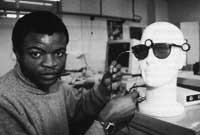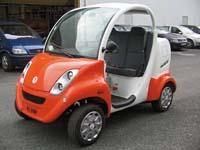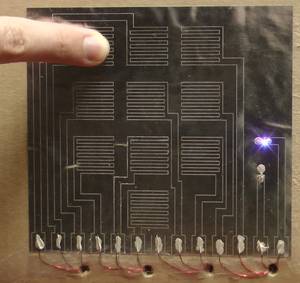The car for the blind, from utopia to reality?
2010/08/01 Aulestiarte Lete, Izaro - Elhuyar Zientziaren Komunikazioa
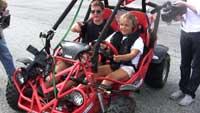
The National Federation of the Blind of the United States (NFB) has collaborated in recent years with researchers and students from the Virginia Tech research center. The first steps began in 2004 with the aim that people suffering from visual problems or blindness can drive without the help of another person.
The project is largely based on the technology used in recent decades for the development of a fully autonomous vehicle. But, on this occasion, the novelty is that all the steps and works are being conducted (and tested) directly by the blind as the most effective way to verify the actual feasibility of the project.
Non-visual interface
They want to develop a vehicle with a non-visual interface. “But our mission goes beyond creating a technology, NFB members have already mentioned. We also wanted to stimulate the imagination to be able to do things that we could not do beforehand, because that is fundamental to correct and define the path of innovation of non-visual technology.”
They report that they want to have prepared the prototypes they use in their hands for 2011. They have been based on Ford Escape hybrids. In particular, they have taken a buggy that is used to cross the dunes and have made it a semi-autonomous vehicle with sensors and laser devices.
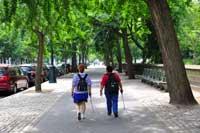
If the project were to go ahead, visually impaired people could drive autonomously in the future. (Photo: CR).
After a previous analysis of the terrain to be crossed, a computer processes this information and informs the driver of the maneuvers to be carried out through a hearing aid. While laser sensors determine the obstacles to avoid, a vibration mechanism alerts them, for example, when to accelerate and brake the car. For this, drivers with vision problems wear a vibrator vest and special gloves. They can know the correct speed and direction and when to stop the car.
According to the members of the NFB, the ultimate goal is not to create a car that leads the blind, “we have sought to develop a vehicle equipped with the necessary technology, that is, with electronic systems and able to respond, so that those who have vision difficulties in driving moments can make their own decisions”. That is why they say that the project they now have in their hands is to take autonomous cars “to another level”.
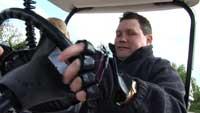
Researchers have applied a non-visual interface to drive. The voice and the mechanisms of vibration are, among others, the elements that inform of the maneuvers to perform. They will wear a vibrator vest and special gloves. (Photo: NFB.
To realize what until now was a utopia, it does not take long. If the process is successful, the innovative vehicle will be presented at the Daytona Beach car circuit in Florida in January 2011. Months later, and predictably during the month of May, project promoters also contemplate a tour from Baltimore to Orland.
According to the NFB members, “the demonstration would help end many stereotypes and erroneous beliefs that prevent us who have vision problems from really integrating ourselves into this society, as the public would see that the blind have capabilities like all. Our only challenge is to get the necessary information for it.”
Published in 7K.

Gai honi buruzko eduki gehiago
Elhuyarrek garatutako teknologia




